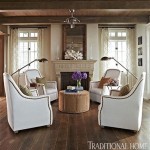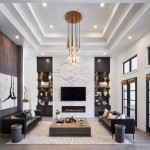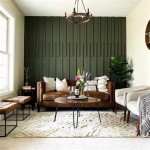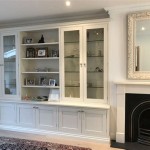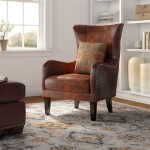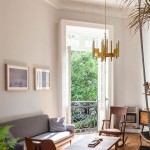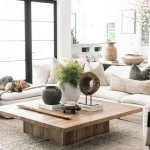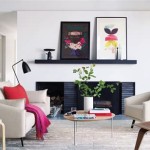Modern Living Room Side Tables: Functionality and Style
The modern living room side table is more than just a place to set down a drink. It's a versatile piece of furniture that contributes significantly to both the functionality and aesthetic appeal of the living space. Serving as a practical surface, a visual anchor, and a subtle expression of personal style, the ideal side table complements the existing décor while offering essential utility.
Choosing the right side table involves considering several factors, including its size, shape, material, style, and purpose. A well-chosen side table can enhance the flow of the room, provide accessible storage, and contribute to a cohesive design scheme. Conversely, a poorly chosen side table can disrupt the balance of the space, clutter the room, and detract from the overall aesthetic.
Understanding the Functionality of Side Tables
The primary function of a side table is to provide a readily accessible surface for everyday items. This includes drinks, snacks, remote controls, books, magazines, lamps, and decorative objects. Its placement near seating areas, such as sofas, armchairs, and loveseats, ensures that these items are within easy reach. The height of the side table should be proportionate to the height of the adjacent seating. A general rule is that the tabletop should be roughly level with the arm of the sofa or chair, allowing for comfortable reach and preventing awkward stretching or bending.
Beyond surface space, many modern side tables offer additional functionality in the form of storage. This can include drawers, shelves, cabinets, or open compartments. Storage-equipped side tables are particularly useful in smaller living rooms where space is at a premium. They provide a concealed or organized way to store items such as blankets, pillows, books, and other living room essentials, helping to maintain a clutter-free environment.
The placement of the side table also impacts its functionality. Side tables positioned between two seating pieces can serve as a shared surface for both. Tables placed at the end of a sofa or beside an armchair provide individual surfaces for each occupant. Some side tables are designed to be mobile, with features such as wheels or lightweight construction, allowing them to be easily moved around the room as needed. This flexibility is particularly useful for accommodating changing seating arrangements or entertaining guests.
Furthermore, the structure of the side table contributes to its functionality. A sturdy and well-constructed table will provide a stable surface for heavier items, such as lamps or decorations, without wobbling or tipping. The base of the table should be designed to prevent scratching or damaging flooring. Options include felt pads, rubber feet, or a wide, stable base.
Exploring Modern Side Table Styles and Materials
Modern side tables are available in a wide range of styles, reflecting the diverse trends in contemporary interior design. These styles can be broadly categorized into minimalist, industrial, mid-century modern, Scandinavian, and contemporary eclectic.
Minimalist side tables are characterized by clean lines, simple shapes, and a lack of ornamentation. They often feature a single surface and a basic frame, emphasizing functionality and understated elegance. These tables are typically made from materials such as metal, glass, or light-colored wood.
Industrial side tables draw inspiration from factory and warehouse aesthetics. They often incorporate raw materials such as metal, concrete, and reclaimed wood. Features like exposed bolts, distressed finishes, and geometric shapes are common. The overall effect is a rugged and utilitarian look that adds character to the living room.
Mid-century modern side tables are influenced by the design trends of the 1950s and 1960s. They typically feature clean lines, tapered legs, and organic shapes. Materials such as solid wood, plywood, and metal are commonly used. Walnut and teak are popular wood choices, known for their rich tones and natural grain patterns.
Scandinavian side tables emphasize simplicity, functionality, and natural materials. Light-colored wood, such as birch or pine, is often used. Designs are typically minimalist, with clean lines and a focus on creating a warm and inviting atmosphere. Features such as tapered legs and rounded edges are common.
Contemporary eclectic side tables embrace a mix of styles, materials, and textures. They may combine elements from different eras and design movements, creating a unique and personalized look. These tables often feature bold colors, geometric patterns, and unexpected materials, such as acrylic, glass, or metal.
The choice of material significantly impacts the overall look and feel of the side table. Wood is a classic choice, offering warmth, durability, and versatility. Metal provides a sleek and modern look, while glass adds a touch of elegance and sophistication. Concrete offers a raw and industrial aesthetic, while acrylic provides a transparent and lightweight option.
Selecting the Right Size, Shape, and Placement
The size and shape of the side table should be carefully considered to ensure that it is proportionate to the surrounding furniture and the overall dimensions of the room. A side table that is too large can overwhelm the space, while one that is too small may appear insignificant and fail to provide adequate surface area.
The height of the side table is particularly important. As previously mentioned, the tabletop should be roughly level with the arm of the adjacent sofa or chair. This allows for comfortable reach and prevents strain. Consider the height of the objects that will be placed on the table, such as lamps or vases, to ensure that they are visually balanced with the surrounding furniture.
The shape of the side table can also influence the overall look of the room. Round side tables soften the lines of the space and create a more inviting atmosphere. Square or rectangular side tables provide a more structured and formal feel. Oval side tables offer a compromise between the two, combining the softness of a round table with the practicality of a rectangular one.
Corner side tables are designed to fit snugly into the corners of the room, maximizing space and providing a convenient surface for lamps or decorative objects. These tables are particularly useful in smaller living rooms where space is limited.
Nesting side tables consist of a set of tables that can be stacked together when not in use. This provides flexibility and allows for extra surface space when needed. Nesting tables are a practical option for entertaining guests or accommodating changing needs.
The placement of the side table should be determined by the layout of the room and the location of the seating areas. Side tables should be placed within easy reach of the sofa, armchairs, and other seating pieces. They should also be positioned in a way that does not obstruct traffic flow or create a cluttered appearance.
Consider the overall design scheme of the room when selecting the placement of the side table. A well-placed side table can serve as a visual anchor, drawing the eye and creating a sense of balance and harmony. Experiment with different arrangements to find the optimal placement that complements the existing décor and enhances the functionality of the space.
Ultimately, the selection of a modern living room side table is a personal decision that should be based on individual needs, preferences, and the overall design of the living space. By carefully considering factors such as functionality, style, materials, size, shape, and placement, it is possible to find the perfect side table that complements the existing décor and enhances the enjoyment of the living room.
Remember to take into account the dimensions of the room, the height of the seating, and the purpose of the table when making your selection. A well-chosen side table can add both style and functionality to the modern living room, creating a more comfortable and inviting space for relaxation and entertainment.

End Side Tables
:max_bytes(150000):strip_icc()/104-5bc3e014bc284f028785cb5992eaffd8.jpg?strip=all)
35 Ideas To Decorate A Side Table Like An Interior Designer

Vivian 16 Modern Side Table With Metal Caged Base

Luxurious Side Tables For Living Room Design

End Side Tables

8 Modern And Stylish Side Table Designs Design Swan

Styling Two Matching Sofa End Tables Dream Green Diy

Coffee Table Decor Ideas And Trends For 2025
Accent Coffee Tables Costco

Modern Living Room Ideas A Guide To Creating Timeless Yet Trendy Interiors Decorilla Online Interior Design

